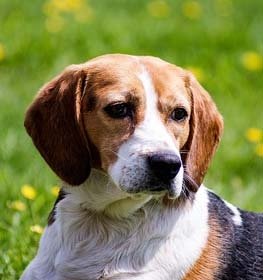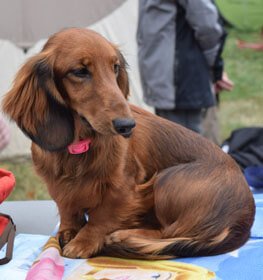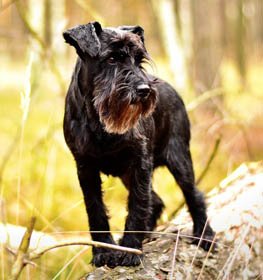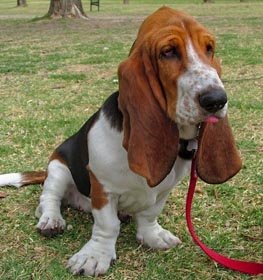Otterhound Information & Dog Breed Facts
Collection of all the general dog breed info about Otterhound so you can get to know the breed more.
| Group | Hunting Dogs |
|---|---|
| Popularity Rank | 186 |
| Reviews | 1 |
| User Ratings | |
|
Compare the Otterhound With Other Dogs
Select at least one dog breed to make the comparsion. | |
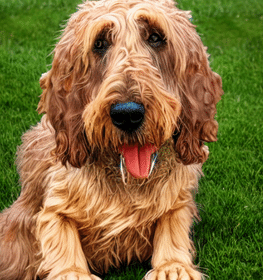 | |
| Origin | |
|
Common Names & Aliases
What other names is an Otterhound known by? Discover all traditional, regional and informal names used for this breed. | Otter Dog |
|---|---|
|
Breed Classification
What type of dog breed is an Otterhound? Learn about its genetic classification and breeding category. | Purebred |
|
Size Classification
What size category is an Otterhound? Learn how big the Otterhound breed typically grows. | Large |
|---|---|
|
Weight Statistics
How much does an Otterhound weigh? Discover typical weight ranges for adult males and females of the Otterhound breed. | 66-115 pounds (30-52 kg) |
|
Average Weight
What is the average weight of an Otterhound? | 90.5 pounds (41 kg) |
|
Height
How tall is the Otterhound? Otterhound height: | 24-26 inches (60-65 cm) |
|
Average Height
What is the average height of an Otterhound? | 25 inches (62.5 cm) |
|
Price Range
How much does an Otterhound puppy cost? Find current market prices and factors affecting Otterhound costs. | $500-$600 If you choose to purchase the Otterhound, you should know that the mentioned amount of money is an average of the collected data from breeders’ sites and puppy finder places. If you have a Otterhound for sale, please advertise it on a reliable website to make sure the Otterhound gets to a happy place. |
|---|---|
|
Availability
How easy is it to get a Otterhound? How many Otterhound are there in the world? | Frequent: The Otterhound is easier than average to get. Maybe there is some risk of overbreeding, as it is a popular breed. Due to its popularity, inbreeding may occur. A new study shows that inbreeding contributes to the incidence of disease and health problems. So be careful and seek the help of an experienced person or a professional, in making your decision. |
|
Intelligence Rating
How intelligent is an Otterhound? Discover the Otterhound's intelligence ranking and learning capabilities. | Average: It takes patience to teach this breed any tricks or commands, but the effort is worth it. They understand and remember new commands after an average of 25-40 repetitions.
The Otterhound ranks average in the intelligence ranking of dogs. |
|---|---|
|
Training Difficulty
How easy is it to train an Otterhound? Learn about the Otterhound's trainability and response to training methods. | Otterhound dogs are easy to train. They find out the association between commands and actions quite quickly. |
|
Watchdog Rating
How good is an Otterhound as a watchdog? Learn about the Otterhound's alertness and guarding instincts. | Otterhound dogs are not the best watchdogs. They aren't very territorial and protective about their property, so they probably won't alert you if they sense something different. |
|
Territorial Protection
Is an Otterhound protective of its territory? Learn about the Otterhound's guarding instincts and behavior. | Otterhound dogs can't provide protection for their territory. It's better to leave them out of the duty of protecting your valuables and property. |
|
Personality Traits
What personality does an Otterhound have? Learn about characteristic Otterhound temperament and behavior traits. | OutrightTemperedBoisterousAmiable |
|---|---|
|
Sensitivity Level
How sensitive are they? Otterhound sensitivity: | Otterhound dogs are less sensitive than other dog breeds. They aren't receptive to their owner's emotions and handle soft punishment quite well.
They don't mind an always changing daily routine, a hectic household, young children, a noisy or office environment, and frequent guest visits. |
|
Affection Level
How affectionate are they? Is an Otterhound a good family dog? | Average: Otterhound dogs are average dogs regarding their affection level. Some breeds are forthcoming and friendly, while others are independent and don't bond too closely with their owners. |
|
Social Needs
How much social interaction does the Otter Dog need? Otterhound social needs: | Otterhound dogs need for social interaction is average. This breed likes being around people or other animals, but they don't mind being left alone for a few hours either. |
|
Impulse to Wander or Roam
How likely is the Otterhound to run away? Does this breed explore or wander a lot? Does Otterhound roam? | Otterhound dogs have high wanderlust potential, which means that this breed has a strong desire for exploring the world. Safer to walk them on a leash unless you teach them how to get back to you on command. This breed is also able to cause damage to your fence. |
|
Prey Drive
Do this canine have a strong prey drive? Does Otterhound have high prey drive? | Otterhound dogs have a high impulse to chase and catch something. Cats or any other small animals are in danger. It's a natural instinct, doesn't necessarily mean that Otterhound dogs are aggressive. Better to keep this breed on a leash. |
|
Barking Frequency
Does an Otterhound bark a lot? Learn about typical Otterhound vocalization patterns and triggers. | Average: The Otterhound barks occasionally. They can change their barks depending on their emotional level and what they're trying to say. Different barks could mean the same and the same barks could have different meanings.
Top reasons for barking: protection, alarm, fear, boredom, attention-seeking, greeting, separation anxiety, compulsive barking. |
|---|---|
|
Playful Nature
How playful is an Otterhound? Understand the typical play drive and energy level of the Otterhound breed. | The Otterhound is a highly playful breed. Excited barking and sometimes nipping will alert you to play. |
|
Apartment Adaptability
Can an Otterhound live in an apartment? Learn about the Otterhound's suitability for apartment living. | Not an apartment-friendly dog the Otterhound breed. If you don't have a garden, think carefully about your decision, keeping Otterhound indoors can cause a lot of problems. |
|
Lifestyle Adaptability
How adaptable is an Otterhound to lifestyle changes? Learn about the Otterhound's flexibility to new situations. | Average: Otterhound dogs adapt to lifestyle changes and different living environments quite okay usually. |
|---|---|
|
Alone Time Tolerance
Can an Otterhound be left alone? Learn about the Otterhound's tolerance to solitude. | Just like every puppy, they are prone to panic, cry, bark, whine when they left alone by their owner. With proper socialization and quality time with the dog can solve this problem. |
|
Bite Risk Assessment
What is an Otterhound biting potential? Learn about the Otterhound's bite risk factors. | Low 🔽 The Otterhound has a low chance of biting somebody. Top reasons for dog bite: protection, pain, excitement, herding instinct, being provoked. (Data based on the available online bite statistics.) |
|---|---|
|
Mouthing Tendency
Is an Otterhound mouthy? Learn about the Otterhound's tendency to use mouth during play. | Otterhound dogs have an average tendency to nip, chew, playbite, or herd people. It's a common habit during puppyhood, not aggressive behavior. These "bites" don't hurt, but Otterhound dogs need to be taught a good attitude. |
|
Bite Strength Rating
How strong is an Otterhound bite? Learn about the Otterhound's bite force measured in PSI. | Between 200 and 400 PSI ⏺ Otterhound bite force: Ordinary. Bite force Otterhound measurements typically fall within the range of 200 to 400 PSI. The bite force of an Otterhound is considered ordinary when compared to other dog breeds, but it is still quite powerful. This Otterhound bite force PSI can cause bite wounds. Otterhound bite PSI is not something that should be feared if the dog is well-trained and managed. To avoid any issues, it's essential to learn how to train an Otterhound puppy not to bite from an early age.
The Otterhound, and many others, have a fearsome presence because they have significant jaw strength, so it is important not to anger the dog and have it around strangers until it is fully trained. However, they are usually quite calm and good companions, they work well in families and are easy to care for. In conclusion, while the Otterhound bite force is certainly an interesting aspect of the breed, it is important not to let it overshadow the many other reasons why these dogs are so loved and respected. With proper training and socialization, an Otterhound can be a loyal and protective companion for your family. |
|
Average Lifespan
How long does an Otterhound live? Learn about the typical lifespan of the Otterhound breed. | 10-12 years The average lifespan of Otterhound: 11 years |
|---|---|
|
Climate Tolerance
How well does an Otterhound handle different weather? Learn about the Otterhound's climate adaptability. | Prefers average to cold weather conditions The Otterhound can adapt to well to cold weather conditions, some dogs even can be a good mountain dog. |
|
Health Concerns
What health issues are common in an Otterhound? Discover typical conditions affecting the Otterhound breed. | Otterhounds tend to have more frequent health issues than other breeds. Regular vet check-ups are needed.
|
|
Vet Care Frequency
How often does an Otterhound need vet visits? Learn about the Otterhound's veterinary care requirements. | Frequent The Otterhound should have a complete physical check-up at least once (but preferably twice) per year. If your dog shows any symptoms, call your veterinarian. |
|
Health Problems
What genetic/health problems does the Otterhound breed have? What are the health issues and concerns of the Otterhound breed? Most common health risks of Otterhound: | Joint ProblemsBloatEpilepsyGlanzmann's Thrombasthenia |
|
Energy Rating
How energetic is an Otterhound? Understand daily activity needs of the Otterhound breed. | Otterhound dogs are high-energy dogs. An active lifestyle makes them happy. |
|---|---|
|
Activity Requirement / Exercise Need
How much exercise does an Otterhound need? How much exercise do Otterhound dogs require per day?
Do Otterhound dogs need a lot of exercises? | Otterhound dogs need a lot of exercises. Long walks should be on a daily schedule. If you live an active life, this breed can be a good choice for you. |
|
Sleeping Need
How much sleep does the Otterhound breed need? | Otterhound dogs don't need too much sleep. They are energetic and desire to live active life. If you think naps are overrated, this breed can be the best choice for you. |
|
Obesity Tendency
Is an Otterhound prone to weight gain? Learn about the Otterhound's obesity risks. | Average: The Otterhound has an average risk for obesity. Daily walks should be on schedule. To make your dog happy and fit, feed him with quality dry dog food and live an active life together. Try to find the happy medium between exercise and feeding.
If you notice any weight gain, consult your veterinarian and make a diet plan. Reduce unhealthy food and snacks, and measure the Otterhound weight regularly. |
|---|---|
|
Food Consumption
How much food does an Otterhound need daily? Learn about the Otterhound's feeding requirements. | 3 to 5 cups of a high-quality dog food daily, divided into two meals. |
|
Allergy Friendliness
Is an Otterhound hypoallergenic? Learn about the Otterhound's suitability for allergy sufferers. | No Otterhound dogs don't do well with allergy sufferers by causing allergic reactions. Some dog breeds are even considered to higher possibility of an allergic response. Coat type isn't necessarily relevant, because most people are allergic to dander (flakes on the dog's skin) or saliva, not actually to dog hair. |
|---|---|
|
Coat Colors
What colors does an Otterhound come in? Discover all possible Otterhound color variations. | BlackTan Blue Cream Wheaten |
|
Grooming Requirements
How much grooming does an Otterhound need? Learn about Otterhound coat maintenance requirements. | Advanced: The Otterhound requires a lot of grooming. Cutting the dog's hair by a professional groomer can be helpful sometimes. Regular brushed dog's coat is less likely to shed. Ears and eyes should be cleaned often to avoid infections. Don't skip the seasonal flea treatment too. Occasional dog nail trimming and dog baths are important.Check the local pet store for dog grooming supplies and find the best dog shampoo to keep its coat healthy and to give your Otterhound a pleasant experience of a dog bath. If you don't have the time, skill, or money to take care of your Otterhound, search for the best dog groomer or clipping service in your area and book an appointment. Maybe you're lucky to have a dog boarding service that includes grooming or walk-in dog bath places nearby. |
|
Drooling Tendency
Does an Otterhound drool a lot? Learn about the Otterhound's drooling habits. | The Otterhound is a perfect example of a very low drooling tendency. If you're disgusted by slobber spots on your clothes, the Otterhound could be a perfect choice for you. Drooling is the unintentional saliva flowing outside of the mouth. It can be completely normal or a sign of a health problem. Certain dog breeds drool minimum compared to others, just like the Otterhound.
If you notice any change in your dog's drooling habit, you should contact a vet as soon as possible. |
|
Stinkiness Rating
Does an Otterhound smell bad? Learn about the Otterhound's natural odor levels. | Medium ⏺ The Otterhound has an average chance of bad smell. Top reasons for dog stinkiness: infection of bad tooth/ear/skin folds, gas attacks. |
|
Coat Characteristics
What type of coat does an Otterhound have? Learn about the Otterhound's fur characteristics. | RoughWaterproof |
|
Bathing Needs
How often does an Otterhound need baths? Learn about the Otterhound's bathing requirements. | 3-4 weeks More often than average. These dog coats tend to be longer, softer, and oilier than short-haired breeds. While a good bath every now and then is a great way to keep your buddy from becoming overly smelly, be mindful about overbathing.
Bathing will wash away your dog’s natural oils, while a simple brushing every few days should keep them clean. |
|
Shedding Level
How much do Otterhound dogs shed? How to control, reduce and prevent the shedding of the Otter Dog? Do Otterhound dogs shed a lot? | Otterhound dogs shed above average. It's a natural process of the hair growth cycle. The amount and frequency of hair loss mostly depend on their health status and breed type. If you don't like vacuum cleaning, you might have to reconsider your choice of having a puppy from the Otterhound breed. |
|
Child Compatibility
Is an Otterhound good with children? Learn about the Otterhound's behavior around kids of different ages. | Otterhound dogs are kid-friendly dogs. This breed is a good choice if you have children. |
|---|---|
|
Pet Compatibility
How well does an Otterhound get along with other pets? Discover the Otterhound's compatibility with other animals. | Otterhound dogs are generally with other pets. |
|
Stranger Friendly
Are they aggressive or friendly towards/with strangers? Otterhound temperament with other people: | Otterhound dogs are not the most stranger-friendly dogs. |
|
Cat Friendly
How well do Otterhound dogs get along with cats? Are they good with kittens? What is this fido's temperament with cats? Can they be good with cats? Can the Otterhound breed live with a cat? | Otterhound dogs are average friendly towards cats. |
|
Dog Friendly
Is Otterhound good with other dogs? Are they dog-friendly dogs? How well do Otterhound dogs get along with other dogs? | Otterhound dogs are average friendly towards other dogs. |
|
Good For First Time Owners
Is Otterhound breed good for first-time owners? Do they make a good dog for novice owners? Is Otterhound breed suitable for first-time owners? | Yes Otterhound dogs are good for novice owners, due to their easy-going personality. |
|
Office Friendly
Are Otterhound dogs good office canines? Do Otterhound dogs make good office-friendly pets? Can they be office dogs? | No Otterhound is not the best dog breed for office environment. |
|
Senior Citizens Friendly
Are they senior citizens friendly dogs? How well do Otterhound dogs get along with the elderly people? What is the Otter Dog temperament with senior people? Are Otterhound dogs good for elderly owners? | Otterhounds are usually recommended for elderly people. |
|
Service Dog Capability
Can an Otterhound be a service dog? Learn about the Otterhound's service work potential. | Not really This breed generally not used as a service dog. A service dog is a term used in the USA to refer to any type of assistance dog specifically trained to help people who have disabilities, such as visual impairment, hearing impairments, mental disorders, seizures, mobility impairment, and diabetes. Service dogs are protected under the ADA (Americans with Disabilities Act).
Otterhound is not the best breed for service purposes. |
|---|---|
|
Therapy Work Suitability
Is an Otterhound good as a therapy dog? Learn about the Otterhound's therapy work aptitude. | Not really This breed is generally not used as a therapy dog. A therapy dog is a dog that might be trained to provide affection, comfort, and love to people in hospitals, retirement homes, nursing homes, schools, hospices, disaster areas, and people with anxiety disorders or autism.
Otterhound is not the best breed for therapeutic purposes. |
|
Scent Detection Ability
Is an Otterhound good at detection work? Learn about the Otterhound's scenting abilities. | Not really They are not typically employed for this type of work, but there may be exceptional cases. A detection dog or sniffer dog is a dog that is trained to use its senses (mostly its smell) to detect substances such as explosives, illegal drugs, wildlife scat, currency, blood, and contraband electronics such as illicit mobile phones.
Otterhound is not the best breed for detection purposes. |
|
Search & Rescue Potential
Can an Otterhound do search and rescue? Learn about the Otterhound's SAR capabilities. | Not really This dog breed is not typically used as a search and rescue dog. The use of dogs in search and rescue (SAR) is a valuable component in wilderness tracking, natural disasters, mass casualty events, and locating missing people.
The Otterhound is not the best breed for SAR purposes. |
|
Maritime Work Ability
Is an Otterhound good on boats? Learn about the Otterhound's maritime capabilities. | Yes Otterhound breed usually likes being on a boat. Boat dogs were typically bred for their strength, stamina, and water resistance, as they were often required to perform tasks such as pulling in fishing nets, and jumping into the water to retrieve ropes or lines, or helping to move cargo. Sailor dog is a type of dog that was bred to accompany sailors on their voyages. They were typically used for three purposes: as a working dog, as a watchdog, and as a companion. A boat dog is a term used to describe a type of dog that was traditionally bred and used as a working dog on boats. |
|
Draft Work Capability
Can an Otterhound pull carts? Learn about the Otterhound's drafting abilities. | Not really A drafting dog or draft dog is a dog bred and used for cart pulling. Dogs bred for this work have strong builds and qualities that are needed, strength and determination.
Otterhound is not the best breed for drafting purposes. |
|
Military Service Background
Was an Otterhound used in military service? Learn about the Otterhound's military history. | Not really In history, this breed was not really used for combat dog. |
|
Puppy Litter Size
How many puppies does an Otterhound usually have? Learn about typical litter sizes. | 4-7 puppies |
|---|---|
|
Pregnancy Duration
How long is an Otterhound pregnant? Learn about the Otterhound's gestation period. | 60-64 days Reproductive cycle of the female Otterhound: The first period called Proestrus lasts for about 9 days.
During this time the females start to attract males. You can notice by swelling vulva and bloody discharge. The second part is the Estrus when the female is receptive for the male. It lasts for about 3 to 11 days. The sign of the proestrus part is the soft and enlarged vulva. The discharge decreases and lightens in color. The third part is the Diestrus. Normally, it occurs around day 14. In this period the female’s discharge changes for vivid red and coming to its end. The vulva returns to average, and she will no longer permit mating. The fourth part called the Anestrus. The time frame between heat periods normally lasts about six months. |
|
Breeding Frequency
How often can an Otterhound have puppies? Learn about safe breeding intervals. | Once a year. More frequent breeding is not healthy. It is very important not to buy a dog from a puppy mill, where the needs of the pups and their mothers are ignored. It's an inhumane high-volume dog breeding facility, where puppies born several times a year. |
|
AKC Classification
What AKC group is an Otterhound in? Learn about the Otterhound's AKC classification. | Recognized by the American Kennel Club in 1909 as a Hound breed. |
|---|---|
|
FCI Classification
What FCI group is an Otterhound in? Learn about the Otterhound's international classification. | Recognized by FCI in the Scent hounds and related breeds group, in the Scent hounds section. |
|
Kennel Club Recognition
Which kennel clubs recognize an Otterhound? Learn about the Otterhound's official recognition. | American Kennel ClubCanadian Kennel ClubFederation Cynologique InternationaleKennel Club of Great BritainAustralian National Kennel CouncilContinental Kennel ClubNational Kennel ClubNew Zealand Kennel ClubUnited Kennel Club |
Otterhound Pros and Cons
- Training Difficulty: Otterhound dogs are easy to train.
- Drooling Tendency: The Otterhound is a perfect example of a very low drooling tendency.
- Child Compatibility: Otterhound dogs are kid-friendly dogs.
- Senior Citizens Friendly: Otterhounds are usually recommended for elderly people.
- Good For First Time Owners: Otterhound dogs are good for novice owners, due to their easy-going personality.
- Maritime Work Ability: Otterhound breed usually likes being on a boat.
Boat dogs were typically bred for their strength, stamina, and water resistance, as they were often required to perform tasks such as pulling in fishing nets, and jumping into the water to retrieve ropes or lines, or helping to move cargo.
Sailor dog is a type of dog that was bred to accompany sailors on their voyages.
- Health Concerns: Otterhounds tend to have more frequent health issues than other breeds.
- Allergy Friendliness: Otterhound dogs don't do well with allergy sufferers by causing allergic reactions.
- Apartment Adaptability: Not an apartment-friendly dog the Otterhound breed.
- Grooming Requirements: Advanced: The Otterhound requires a lot of grooming.
- Shedding Level: Otterhound dogs shed above average.
- Watchdog Rating: Otterhound dogs are not the best watchdogs.
- Impulse to Wander or Roam: Otterhound dogs have high wanderlust potential, which means that this breed has a strong desire for exploring the world.
- Office Friendly: Otterhound is not the best dog breed for office environment.
Otterhound History
According to researchers the Otterhound, one of the most ancient of the British breeds, was developed in England to hunt otters. The references to this breed date back to the 12th century and at the time it was greatly loved by the nobility and also by several British Kings such as King John (1199-1216), Richard III, Charles II, Henry VI, and Queen Elizabeth who was also known as the first “Lady Master of Otterhounds”.
However, the origin of the breed is still unknown. We know that the breed reached its current form in the late 18th century and that many different breeds and combinations of breeds have been suggested as the foundation of the true Otterhound. For example; the Old Southern Hound, the Griffon Nivemais from France, the Bloodhound, the rough-coated Welsh Harrier or Foxhound, and Griffon Vendeen. On the other hand, some people believe that the breed is originated from France as some of the early writers such as Marples states that “it is almost the exact duplicate of the Vendeen Hound of France”.
As the breed’s name suggests, the otter was the dog’s preferred prey. Otterhounds were used in packs in order to protect food sources and control the otter population since otters competed with fishermen for the natural trout supply in rivers and lakes. The breed has a sense of smells so acute that it could smell, in the morning, if an otter passed through the water at the night before. The Otterhound also had great swimming ability by nature and would hardly stop even after hours and hours of swimming. Its naturally protective coat also helped to dive into the water and seek its prey even if it was cold. Furthermore, the breed was also used to hunt raccoons, bears, and mink. Besides the practical reasons, otter hunting also became one of the most famous sports found in England. In the late 1800s, there were more than a dozen packs operating in Britain during every hunting season. Not so much later, otter hunting reached its peak of popularity in the years preceding World War I. At the time there were more than 500 hounds in 24 packs which hunted otter, though most of these dogs were not purebred Otterhounds. Moreover, these hunt packs continued to cross-breed their hounds well into the 20th century to improve their hunting abilities. One of the results is that all current purebred Otterhound pedigrees go back to a Bloodhound/Griffon Nivernais cross done in 1958.
In the early 1970s, a drastic drop in the otter population occurred because of water pollution. It was decided that otter hunting has to be banned in England in 1978 and also in Scotland two years later. As a result, the Otterhound’s existence was severely threatened. To ensure the survival of the breed, the two remaining packs, The Dumfriesshire Otter Hunt of Scotland and The Kendal and District Otter Hunt of England worked together and also with several other breeders and the UK Kennel Club to register the remaining purebred hounds. Most of them were dispersed to private owners, with some going to the mink hunting packs.
The ‘purebred’ Otterhound we have today, was standardized sometime during the 19th century. Many generations of breeding for different purposes have strengthened the characteristics of the breed. The Otterhounds make a strong family companion as they are very attentive, loyal, affectionate, and enjoy an active lifestyle. Today there are fewer than 800 Otterhound's worldwide, with the largest numbers in the UK and US ( the Otterhound Club of America was founded in 1960) and with smaller numbers in Scandinavia, Germany, Canada, and the Netherlands.
Latest Otterhound Compares
Otterhound Names
How old is my Otterhound in human years?
You May Also Like
Rate The Otterhound Breed
Otterhound Comments, Reviews and Questions
- zippy
May 12, 2020, 9:13:10 AM:
super fun and easy to train

